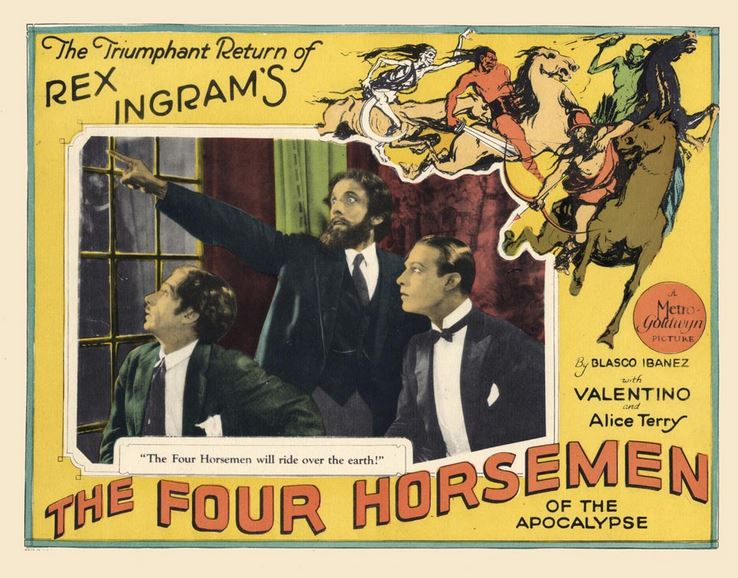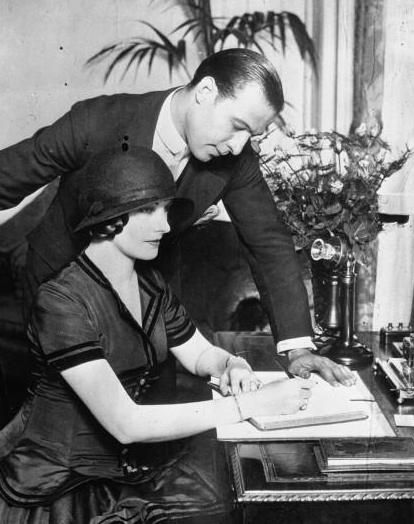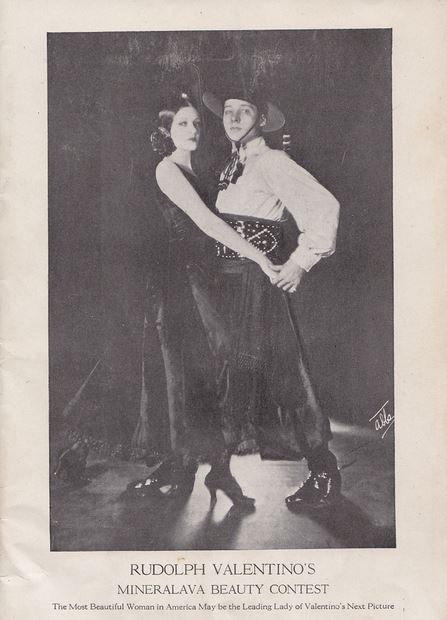Blog Archive
Rudolph Valentino: The Italian “Latin Lover”
Next week’s Tenement Talk will focus on Making Italian America: Consumer Culture and the Production of Ethnic Identities, a new collection of essays that explores the contributions that Italians and Italian Americans have made to American culture, which are vast and varied. In the early 20th century, culture was greatly made by the newest medium to sweep the nation – film – and the first “movie star” was an Italian!
In the 1920’s, newspapers across the world gave great attention to movie star in particular: Rudolph “Latin Lover” Valentino. One of the first movie stars, pop icons, and sex symbols in American history, Americans flocked to the movie theaters to see all of Valntino’s films. In the Lower East Side, people would have gone to the Thalia Theater at 46 Bowery, which had transformed from a Vaudeville theater to a movie theater. When he died at age 31, his name was on seemingly every newspaper in the world and his many female fans became hysterical. When his body was taken to a funeral home on Broadway, thousands of fans overwhelmed the police and caused a stampede to see their favorite movie star; over 100 people were injured (the mob had been orchestrated by Valentino’s management team to create buzz).
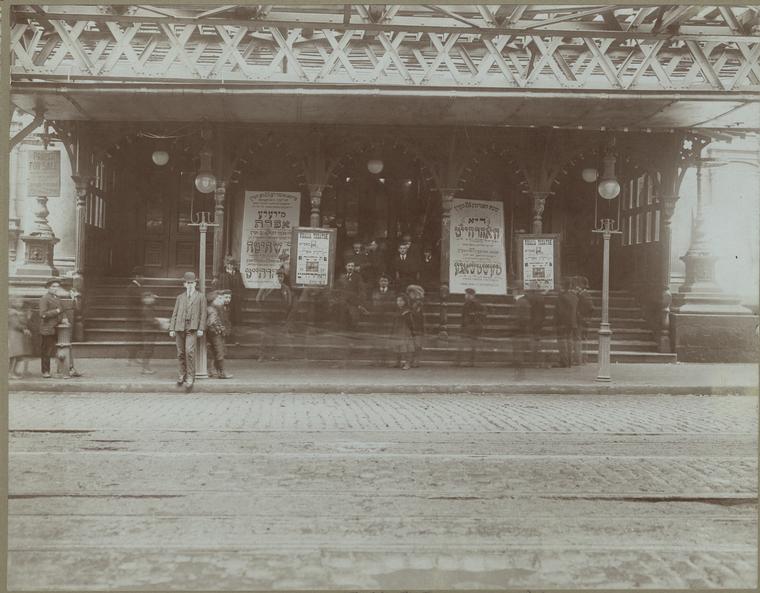
The Thalia Theater on the Bowery, about 1904. The Thalia, or the Bowery Theater as it was more commonly known, had many 'lives.' In this photo, it was a Yiddish theatre, but in the 1920's and 1930's, would be a movie theatee frequented by Italian immigrants. Photo courtesy the New York Public Library.
Born Rodolfo Alfonso Raffaello Pierre Filibert Guglielmi di Valentina d’Antonguolla in 1895 in Puglia Italy, Valentino was reportedly a bit of an enfant terrible, spoiled rotten by his mother. After receiving a degree from an Italian agricultural school, moved to the United States at age 18; he was processed at Ellis Island on December 23rd, 1913. In New York, Valentino had a hard time finding work, and spent more than a few nights on the streets. He worked temporarily as a gardener and waiter, until his luck changed when he was hired as a dancer at a club called Maxim’s, where he met many rich and influential people.
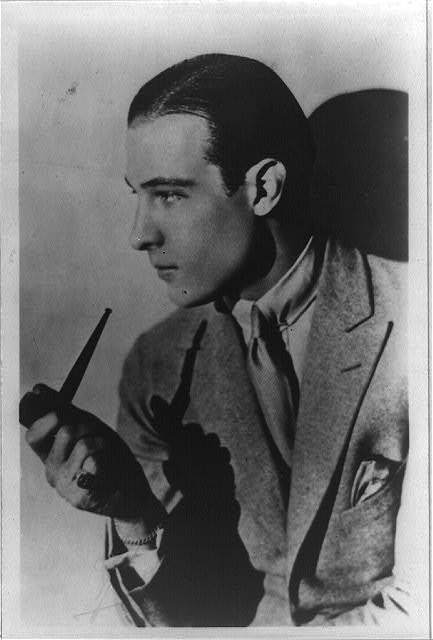
Rodolfo Alfonso Raffaello Pierre Filibert Guglielmi di Valentina d'Antonguolla. Known professionally as Rudolph Valentino, and known to his fans as "The Latin Lover," or simply "Valentino." Image courtesy the Library of Congress.
Valentino moved out to Los Angeles in the late 1910’s, where he lived on Sunset Boulevard and took small film roles. With his dark eyes and hair, Valentino was often cast as a “heavy,” or the villain role, of which he quickly became tired. On a trip back to New York in 1917, he was cast in his first big role in a film called The Four Horsemen of the Apocalypse.
The film, released in 1921, was a gigantic hit. It was one of the first films to ever make more than $1,000,000 at the box office and remains the sixth highest-grossing silent film of all time. Wanting to capitalize on his rising star, Valentino took the lead in a film called The Sheik in 1921. It was another smash success; Valentino was officially a star, and one of the downsides of stardom is infamy.
While still a struggling actor in 1919, Valentino had met and married established actress Jean Acker. The two had a tempestuous relationship, with Acker reportedly locking Valentino out of their hotel room on their wedding night. Their relationship was tabloid fodder from the beginning, and only got more sensational when Valentino was charged with bigamy after their divorce.
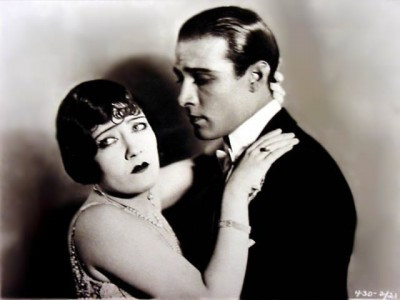
Jean Acker and Valentino. That look on her face should have been a clue - their marriage reportedly lasted only 6 hours.
After filing for divorce from Acker, Valentino did not wait California’s legally mandated one year waiting period before marrying his second wife , costume designer, set designer, and sometime actress Natacha Rambova (who played the exotic part quite well, but was actually born Winifred Kimball Shaughnessy of Salt Lake City, Utah). Their marriage was forced to be annulled and the two separated for a year and remarried in 1923. Valentino’s tangled love life propelled his star even further into the sky.
Il Progresso Italo-Americano covered the stories of Valentino’s many loves and losses with great relish. They printed advertaisments with his face on them, especially for Mineralava Beauty Clay, the company for which Valentino acted as a beauty pageant judge. Interestingly enough, one of the girls that Valentino chose as the winner of one of these contests was Clara Bow, the Brooklyn tenement-born actress who would go on to be her own star and tabloid favorite.
The coverage of Rudolph Valentino’s love life can be directly traced to today’s glossy gossip magazines, and his stardom to that of our contemporary celebrities.
More information on next week’s Tenement Talk can be found here.
– Posted by Lib Tietjen
